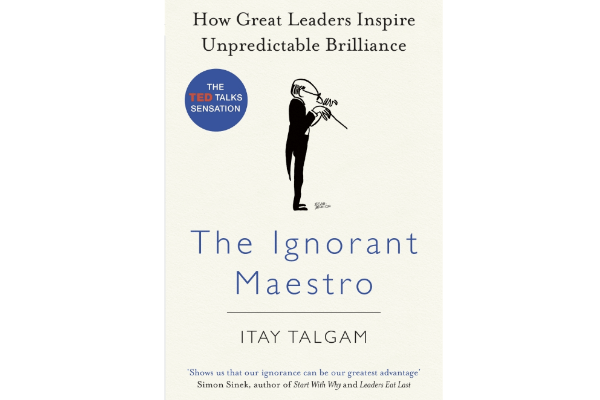In the virtual world, attention is currency. And anyone who has ever presented or facilitated online knows how easy it is to lose an audience to an email, a slack notification, or even a wandering mind. In our experience at FocusU, engaging a virtual audience – be it in a workshop, a meeting, or a town hall – is no longer just a nice-to-have skill. It’s a necessity.
Jonathan Haidt, in his book The Happiness Hypothesis, offers a beautiful metaphor for how the human brain works. He likens our minds to a rider and an elephant. The rider is our rational self – logical, disciplined, focused. The elephant? That’s our emotional self – driven by instinct, easily distracted, but immensely powerful. To truly connect with people, we need to speak to both. And when it comes to virtual settings, the elephant needs a bit more attention.
Related Reading: 10 Ways To Improve Communication In The Virtual World
So here are 10 tried-and-tested ideas to keep your virtual audience engaged, focused, and truly present:
1. Tell Stories That Stick
Table of Contents
Nothing gets the brain to sit up like a well-told story. In our virtual workshops, we often begin with a personal anecdote or an unusual experience. A simple “Last week, something unexpected happened during a client call…” creates curiosity and establishes relatability. Stories make abstract ideas real. The more specific and personal, the better.
Related Reading: 10 Short Stories To Kickstart Your Storytelling Journey
2. Use the Element of Surprise
We once began a session by asking participants to turn off their videos and return only when they had something red in their hands. It sounds silly but the surprise of the instruction and the physical action jolted everyone into presence. Surprise breaks monotony. Whether it’s a sudden poll, an unusual prop, or a twist in the story – it wakes the audience up.
3. Make It Experiential
In our experience, the best virtual sessions are those that get people doing, not just listening. If you want to teach collaboration, don’t tell them what collaboration looks like; let them experience it. Online escape rooms, puzzle-solving tasks, or even breakout room activities where teams have to build consensus are powerful tools.
Related Reading: Why Experiential Learning?
4. Gamify the Experience
Games work. Always. We’ve seen managers, leaders, and even CXOs light up at the prospect of a friendly competition. Incorporate points, rewards, badges, leaderboards. Whether it’s Kahoot quizzes, scavenger hunts, or creative role-play – gamification injects energy.
Related Reading: How can Gamification be used as a Learning Tool for Your Organisation?
5. Add a Time Challenge
Time limits create urgency and engagement. “You’ve got 10 minutes to come up with 5 ideas on how to reduce virtual fatigue. Go!” instantly transforms passive listeners into active participants. Time-based prompts are especially useful in brainstorming and problem-solving segments.
Related Reading: Time Trek Challenge: Enhancing Employee Time Management Through Gamification – A Case Study
6. Present Real-Life Dilemmas
One technique we often use is what we call “real-world case tension.” Pose a dilemma that doesn’t have a clear answer: “You’re a team leader and two of your top performers want the same project. What do you do?” People love to weigh in, debate, and explore nuanced perspectives. It makes the learning sticky.
7. Nurture Curiosity
Instead of giving all the answers, leave room for the audience to wonder. Ask: “What do you think happened next?” or “How would you have approached this situation?” Questions ignite curiosity, which leads to exploration. That’s where true learning begins.
8. Engage the Senses (Yes, Even Virtually!)
Think audio, visual, tactile. Play a piece of music. Share a comic strip. Ask them to draw their current mood on a piece of paper. In one of our sessions, we had participants describe their remote work experience using a single emoji. These micro-moments activate different parts of the brain.
9. Use Humour and Lightness
Humour is a bridge. It creates connection, lowers barriers, and makes the facilitator relatable. In our sessions, we love using memes, gifs, and even silly warm-up games like “Find an object that represents how your day is going.” When people laugh, they engage. Just ensure your humour is inclusive and appropriate.
10. Give People Choice
Autonomy boosts engagement. Whether it’s choosing a breakout room topic, voting on what the group tackles next, or assigning someone as a “co-host for the day,” giving people control makes them co-creators of the experience. In one leadership workshop, we gave participants 3 learning tracks to choose from – and they loved the flexibility.
Bonus Tip: Include Moments of Pause
This might sound counterintuitive, but intentional pauses help people process. Ask a powerful question and give 30 seconds of silence for them to reflect. Use a quiet moment to let the last story land. We’ve noticed that moments of silence are as powerful as the ones filled with conversation.
Takeaway for L&D Leaders
In our work with L&D and HR teams, we’ve realised that the goal of virtual facilitation isn’t just content delivery – it’s connection. Whether you’re hosting a 60-minute team huddle or a two-day leadership program, keeping your audience engaged is both an art and a science. Use these strategies to design more human, meaningful, and memorable virtual experiences.
Because at the end of the day, learning happens when people feel seen, heard, and involved.
If you’ve tried any of these techniques or have other ideas that worked wonders for you, we’d love to hear from you!
Related Reading: Facilitating with Excellence














